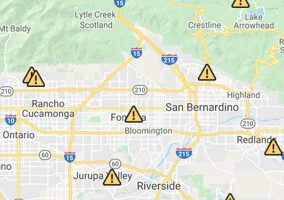California Energy Commission Adopts Standards Requiring Solar Systems for New Homes

Redlands, CA – The California Energy Commission recently adopted building standards that require solar photovoltaic systems starting in 2020, moving to cut energy use in new homes by more than 50 percent. With all the sunny days and growth in housing, Inland Empire solar energy will surely be a topic for years to come. The building energy efficiency standards, which are the first in the nation to require solar, will reduce greenhouse gas emissions by an amount equivalent to taking 115,000 fossil fuel cars off the road.
The cost-effective 2019 Building Energy Efficiency Standards, which take effect on Jan. 1, 2020, focus on four key areas: smart residential photovoltaic systems, updated thermal envelope standards (preventing heat transfer from the interior to exterior and vice versa), residential and nonresidential ventilation requirements, and nonresidential lighting requirements.
You can view the full California Energy Commission press release here.
Around the Inland Empire:
Southern California Edison (SCE) supports the California Energy Commission’s adoption of the 2019 Building Energy Efficiency Standards (“Title 24”). SCE is committed to reducing GHG emissions and creating a clean energy future.
In October 2018, SCE released the, “The Clean Power and Electrification Pathway,” a proposal that lays out a clear path to reducing California’s GHG emissions and improving air quality. The pathway aligns with key provisions outlined by the CEC, including those for domestic hot water-heating systems with electric heat pump water heaters, the inclusion of solar on new residential buildings, and the option of battery storage.
“Many of the affordable housing providers we work with are already building solar into their new and existing buildings because they see the long-term value in it for stabilizing and reducing energy costs for their own operations and for their low-income tenants/buyers,” said Natasha Ferguson, marketing and communications analyst with GRID Alternatives. Grid Alternatives Inland Empire works to be a part of the clean energy transition, with solar programs and solar workforce development.
Aaron Norris of The Norris Group, a company that has focused California real estate investor community for over 20 years said, “The conversation that people aren’t having is that… utilities are going to start charging a base rate and then a usage fee for when you are on and offline. So, the consumer is going to pay more upfront and then will see increases from the utilities over the long term.” You can see all of Aaron’s comments on his weekly real estate recap, “If You’re in California, You May Have to Go Solar.”
“Right now, California pays other states to take the excess energy produced by the current solar during the moderate spring and fall weather, so it could add to California’s costs,” said Mark Walsh of D48 Energy Management. “The solution to that problem is batteries, and California has a battery incentive that can help to store the excess power produced, but the SGIP battery rebate program is not enough in its current form.”
In the report, California’s Solar Energy Overload by the Institute for Energy Research echoed the concern, “Rapid expansion of renewable power can cause unexpected problems with electric grid stability. Since too much power is destabilizing, as is too little power, excess power production must be exported or curtailed. While consumers in the neighboring states benefit from lower electricity costs, California’s ratepayers are footing the bill for the utility generators that produce the power.”
You can continue reading more about Inland Empire solar news here, and find solar jobs in the Inland Empire here.
























